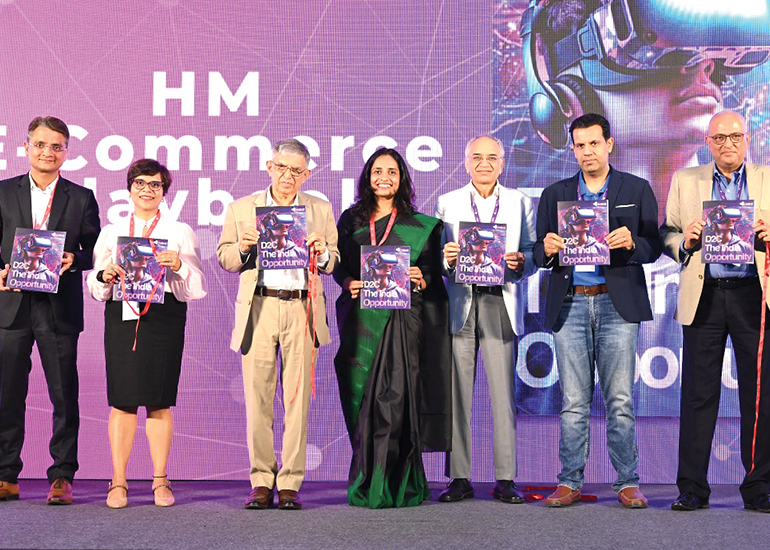 The entire Supreme Court ruling on the TRAI tariff order is summarized in one key sentence: “…the TRAI Act, being a statute conceived…to serve the interest of both broadcasters and consumers, must prevail…over the Copyright Act, which protects the property rights of broadcasters.” The rest is detail.
The entire Supreme Court ruling on the TRAI tariff order is summarized in one key sentence: “…the TRAI Act, being a statute conceived…to serve the interest of both broadcasters and consumers, must prevail…over the Copyright Act, which protects the property rights of broadcasters.” The rest is detail.That line of thinking is unexceptionable. It responds to the petitioners’ argument, and states the priorities inarguably.
My argument is with the tariff order itself. I am surprised the broadcasters chose to challenge the copyright implication rather than to address its basic issues.
1. The underlying basis of the order, without which it is not implementable, is the myth that cable distribution is digital.
Physically, in terms of technology, it is. But if digitization means the consumer has a choice, it is not. If digitization means clear and transparent reporting, it is not.
The truth is that digitization has failed. How many distribution platform operators (DPOs) have installed subscriber management systems? How many DPOs can tell you exactly how many subscribers they have, and what they buy? Even today a broadcaster and an MSO simply agree on a negotiated number and go on that basis. We’ve been through CAS and DAS, but no regulator, no government, no law has been able to make DPOs comply. What has changed now to make them fall in line? Issuing an order without being able to ensure compliance with it is just wishful thinking.
2. Why should price regulation in content delivery apply only to broadcasting, why not to OTT as well – Netflix, Hotstar, et al?
In fact, telecom and broadcasting share a regulator: TRAI. (Broadcasting is not even in its name; telecom is.) So why does the same regulator treat the two technology platforms differently in the matter of creative content delivery to the same consumer? (I’m not suggesting price regulation in OTT: I’m questioning it in broadcasting.) I’d like to believe it is oversight, that it did not occur to anyone, but I’m having a hard time doing that.
3. Why regulate TV prices, in the first place – in a country that has no controls on the prices of steel and cement, or of biscuits, toothpaste, toilet soap, or hundreds of other products that are used by the poor and the middle class?
In mobile telephony, desperate competition has driven prices to unviable levels, inevitably compromising quality of service. Who in the country doesn’t suffer dropped calls? Yet the same regulator neither enforces quality of service standards nor regulates pricing in that sector. Inexplicable.
4. A pay channel in a bouquet cannot be priced at more than Rs 19.
You can discount the a la carte price as much as you like, provided the discounted price is no more than Rs 19: the price of barely three days of your daily newspaper, for 24x7 content. Based on what economics?
In mobile telephony, desperate competition has driven prices to unviable levels, inevitably compromising quality of service. Who in the country doesn’t suffer dropped calls? Yet the same regulator neither enforces quality of service standards nor regulates pricing in that sector. Inexplicable.
5. The regulator in its wisdom does choose to regulate prices.
The MRPs of bouquets and the a la carte prices of single channels are declared, and let’s accept that the consumer pays no more than those. But how much is the MSO actually paying for it: what is the discounted price, and therefore the MSO’s margin?
6. When CAS started, in 2007, the Basic Service Tier was 30 FTA channels for Rs 80. Now it is 100 FTA channels for Rs 130:
that’s a 50% reduction in the pro-rated price per channel. Eleven years later, how is that even viable? Have anyone’s costs gone that way: the broadcaster’s, the distributor’s, or the consumer’s? Anyone who thinks the distribution channels will take the inevitable hit shouldn’t worry too much. It is the rare home that will settle only for the 100 FTA channels. With discounted prices and unknown subscriber numbers, there is enough and more wiggle room.
And, oh, which 100 FTA channels, of the nearly 900 in the country? Twenty-four of the 100 mandatorily have to be DD and Parliament channels, so there are actually 76 slots available. Do you want yours to be among them? That’ll cost you.
If all that seems somewhat overstated, consider this. When this case was in the Madras High Court, it was the All-India Digital Cable Federation that joined it as an intervener, alongside the TRAI. Enough said.
In most businesses in India, everything works in favour of the middleman, and broadcasting is no exception. Governments have come and gone; technology has changed; the structure of the broadcasting industry has changed; but, “Plus ça change, plus c’est la même chose. (The more things change, the more they remain the same).”























